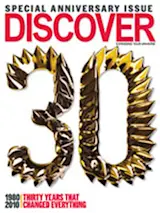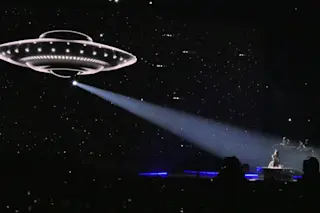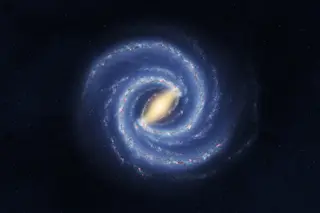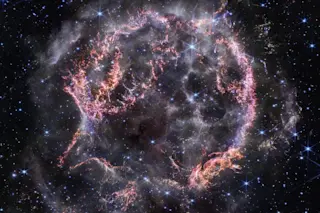Physicist Saul Perlmutter vividly remembers what cosmology was like during his grad student days 25 years ago. “It was a standing joke that if you were within a factor of 10 with your measurements, you were doing well,” he says. Estimates of the universe’s age ranged from 7 billion to 20 billion years. It wasn’t a discipline renowned for exactitude.
Cosmology was reborn on November 18, 1989, with the launch of the Cosmic Background Explorer (COBE) satellite. COBE made the first precise measurements of the faint radiation left over from the Big Bang. According to theory, tiny quantum fluctuations were blown up to cosmic proportions within the first fraction of a second after the birth of the universe, creating lumps that seeded today’s galaxies and galaxy clusters. COBE found the imprints of those fluctuations, strong evidence for the standard model of the Big Bang. A second, even more shocking development came in 1998 from two teams of astronomers (one led by Perlmutter) studying supernovas in distant galaxies. They discovered that the expansion of the universe is accelerating, driven apart by an enigmatic, all-pervasive property of space now called dark energy. “Will dark energy keep the universe accelerating faster and faster?” Perlmutter asks. “Or could it decay or even change and make the universe collapse?”
In 2001 COBE’s successor, the Wilkinson Microwave Anisotropy Probe (WMAP), brought even more precision to cosmology. WMAP finally revealed the exact age of the universe: 13.7 billion years. It also showed that ordinary matter—the atoms that make up galaxies, planets, and people—accounts for a paltry ?4 percent of the universe’s contents. Dark matter, invisible except for its gravitational influence, makes up about 23 percent; dark energy accounts for the rest. Next up, the Joint Dark Energy Mission—tentatively scheduled to launch in 2016—will fill in more details. This space observatory will be able to study supernovas that exploded as far back as 10 billion years to analyze the shifting relationship between the pull of mass and the push of dark energy. “To make any predictions,” Perlmutter says, “we need measurements about 20 times more accurate than we have now.” Those measurements—and the next era of precision cosmology—are on the way.
Tim Folger is a former DISCOVER senior editor who also freelances for National Geographic, The New York Times, and more. He is series editor for The Best American Science and Nature Writing.














